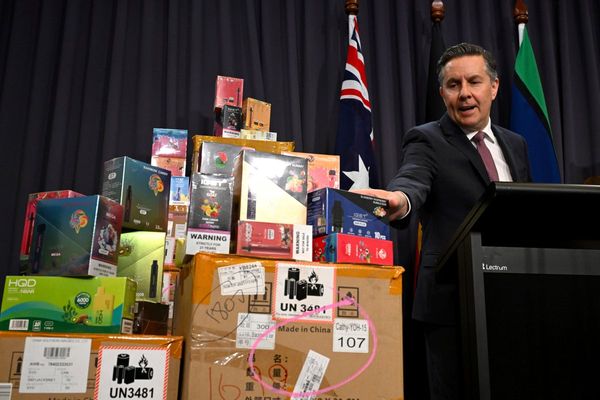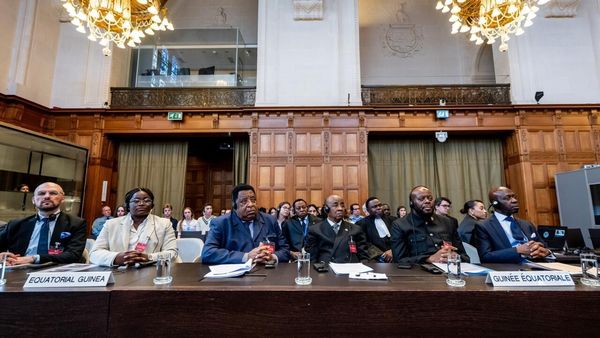Families of those killed in last month’s Air India crash are demanding justice after a preliminary investigation revealed that both engine fuel control switches had been set to “cutoff” seconds after takeoff.
The crash of Flight AI171, a Boeing 787-8 headed to London Gatwick, killed 260 people.
Ayushi Christian, who lost her husband Lawrence in the crash, told the BBC: “Justice should be served. Action should be taken against those responsible.”
Following the report, India’s aviation regulator ordered immediate inspections of fuel switch locking mechanisms on all Boeing aircraft.
The US Federal Aviation Administration (FAA) responded to growing concerns by insisting the fuel switch used on the aircraft was safe, despite a 2018 advisory warning that some switches were being installed with their locking features disengaged.
India’s Aircraft Accident Investigation Bureau (AAIB) said Air India had not acted on that advisory.
The bureau also suggested human error might have played a role.
However, the Indian Commercial Pilots’ Association defended the crew, stating the pilots “acted in line with their training and responsibilities under challenging conditions and the pilots shouldn't be vilified based on conjecture”.
Key Points
- India's aviation regulator orders airlines to inspect fuel switch locks on Boeing
- US aviation regulator insists fuel switch locks on 787s are safe
- Pilots Association of India objects to suggestion pilots were to blame
- Air India crash investigation finds fuel switches cut off moments before impact
The unanswered questions about Air India crash after preliminary report published
12:15 , Maroosha MuzaffarOver the weekend, the Indian Aircraft Accident Investigation Bureau released a preliminary report on last month’s crash of Air India flight 171, which killed 260 people, 19 of them on the ground.
The aim of a preliminary report is to present factual information gathered so far and to inform further lines of inquiry.
However, the 15-page document has also led to unfounded speculation and theories that are currently not supported by the evidence.
Here’s what the report actually says, why we don’t yet know what caused the crash, and why it’s important not to speculate:

The unanswered questions about Air India crash after preliminary report published
Crash report 'deeply concerning', says lawyer of Air India victim families
11:46 , Maroosha MuzaffarDemitrus Danas, an aviation lawyer with UK-based firm Irwin Mitchell, who is advising several families of the Air India crash victims, has described the preliminary findings of the Air India crash investigation as “deeply concerning”.
He said the findings “certainly merit further scrutiny to establish the full facts around how this tragedy happened”.
“We’re continuing to speak with and advise families who’ve been affected by the Air India crash. Understandably, all they want is to be provided with answers,” he added, according to the BBC.
“As investigations continue, we’d urge families not to feel pressured by Air India’s owners into signing documents relating to potential compensation payments.
“The findings certainly merit further scrutiny to establish the full facts around how this tragedy happened,” he said in a statement.
Families demand justice after prelim report reveals fuel switches were flipped to ‘cutoff’
11:15 , Maroosha MuzaffarFamilies of victims in last month’s Air India crash are calling for justice after a preliminary report revealed that both engine fuel control switches were set to “cutoff” just seconds after takeoff.
The crash of Flight AI171, a Boeing 787-8 en route to London Gatwick, claimed 260 lives.
Ayushi Christian, who lost her husband Lawrence Christian in the disaster, told the BBC: “Justice should be served. Action should be taken against those responsible.”

“We’re still hoping for a more transparent and honest investigation that doesn’t shy away from addressing possible mechanical flaws or lapses in protocol to avoid future potential accidents,” Ishan Baxi told The Guardian. His two cousins, Dhir and Heer Baxi, were on Flight 171 on 12 June and were flying home to London.
“I just hope the final report brings full clarity on what exactly failed and who’s accountable. It shouldn’t hide behind vague terms.
“More than anything, it should push for real changes so this never happens again.”
Two pilots’ unions reject ‘human error’ speculation after crash report
10:43 , Maroosha MuzaffarTwo Indian pilot unions have rejected speculation that pilot error caused last month’s Air India crash that killed 260 people.
A preliminary report found that fuel switches were turned off before the devastating crash, prompting questions about whether it was deliberate.
The Indian Commercial Pilots Association (ICPA) called suicide claims “reckless and unfounded”, while the Airline Pilots’ Association of India accused investigators of bias, saying the probe “is being driven in a direction presuming the guilt of pilots”.
“We strongly object to this line of thought,” ALPA India President Sam Thomas said in a statement issued on Saturday.
ALPA requested the AAIB that they be included as “observers so as to provide the requisite transparency in the investigations”.
Air India CEO says pilots ‘passed’ tests as criticism mounts over probe report
10:00 , Maroosha MuzaffarRejecting allegations of pilot error causing the devastating Flight 171 crash last month, the Air India chief said that they both had "passed their pre-flight breathalyser and there were no observations pertaining to their medical status".
The aircraft was piloted by Captain Sumeet Sabharwal and assisted by First Officer Clive Kundar. Both were experienced jet pilots with nearly 19,000 flying hours between them, including more than 9,000 on Boeing 787.
What is a ‘black box’ and what can it tell us about the Air India plane crash
09:30 , Maroosha MuzaffarA preliminary report into last month’s Air India plane crash has suggested the aircraft’s fuel control switches were turned off, starving the engines of fuel and causing a loss of engine thrust shortly after takeoff.
The Air India flight, a Boeing 787-8 Dreamliner, crashed on June 12 and killed at least 260 people, including 19 on the ground, in the northwestern city of Ahmedabad.
Only one passenger survived the crash, which is one of India’s worst aviation disasters.
The report, issued by India’s Aircraft Accident Investigation Bureau on Saturday, is based on the data recovered from the plane’s black boxes, combined cockpit voice recorders and flight data recorders.
Read more here:
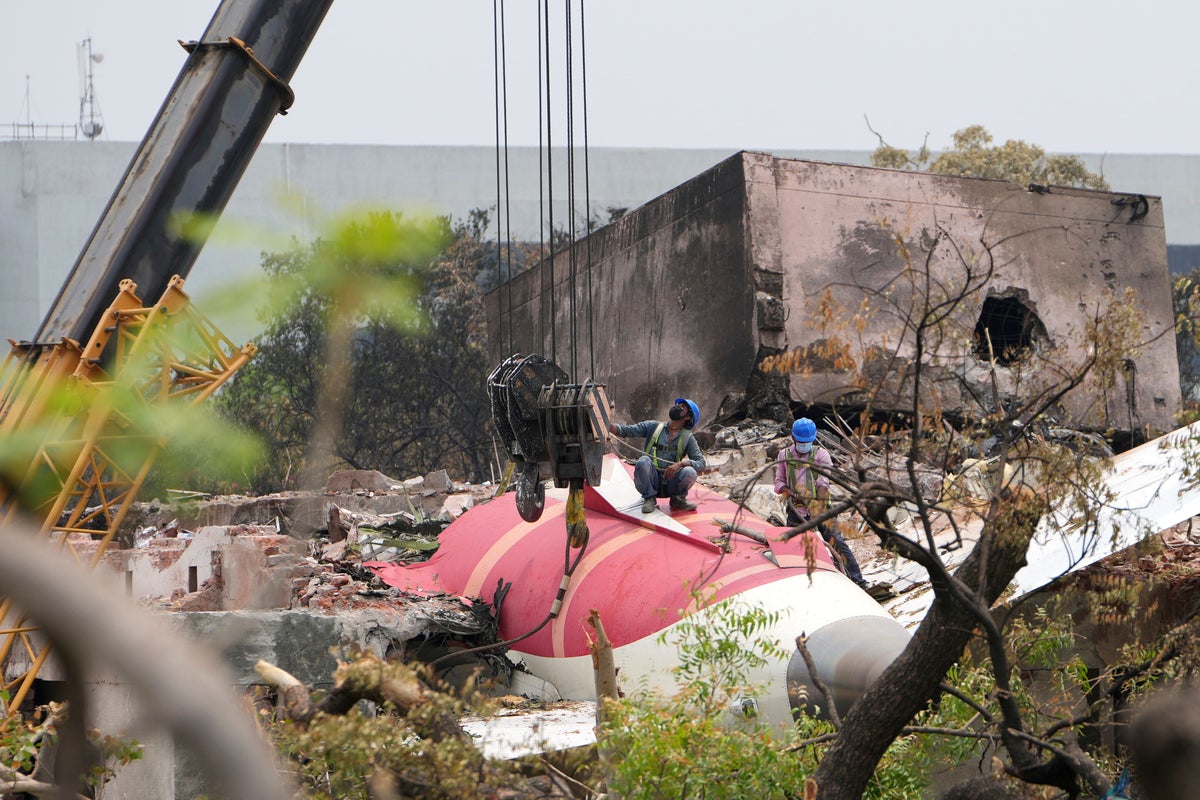
What is a ‘black box’ and what can it tell us about the Air India plane crash
What does the cockpit voice recorder do?
09:00 , Maroosha MuzaffarThe cockpit voice recorder collects radio transmissions and sounds such as the pilot’s voices and engine noises, according to the NTSB’s website.
Depending on what happened, investigators may pay close attention to the engine noise, stall warnings and other clicks and pops, the NTSB said. And from those sounds, investigators can often determine engine speed and the failure of some systems.
Investigators can also listen to conversations between the pilots and crew and communications with air traffic control.
Experts make a meticulous transcript of the voice recording, which can take up to a week.
More airlines asked to check fuel switches on Boeing jets after Ahmedabad crash
08:30 , Maroosha MuzaffarIndia's aviation authorities have ordered its airlines to examine fuel switches on Boeing aircraft after a preliminary report on the fatal Air India flight crash last month found that the fuel supply was cut off after takeoff.
At least 260 people died after a London-bound Air India 787 Boeing Dreamliner crashed shortly after takeoff from the Ahmedabad airport in India's western state of Gujarat in one of the worst aviation disasters in history.
The Directorate General of Civil Aviation (DGCA) said it had issued an order to investigate locks on several Boeing models, including 787s and 737s, after several Indian and international airlines began making their own inspections of fuel switches. The Boeing aircraft are used by three of India's largest airlines.
The DGCA has set a 21 July deadline for airlines to complete the checks, adding that "strict adherence to the timeline is essential to ensure continued airworthiness and safety of operations".
A preliminary report released one month after the fatal crash revealed that the switches had almost simultaneously flipped from run position to cutoff three seconds after takeoff. One pilot was heard on the cockpit voice recorder asking the other why he cut off the fuel. "The other pilot responded that he did not do so," the report said.
Read more here:
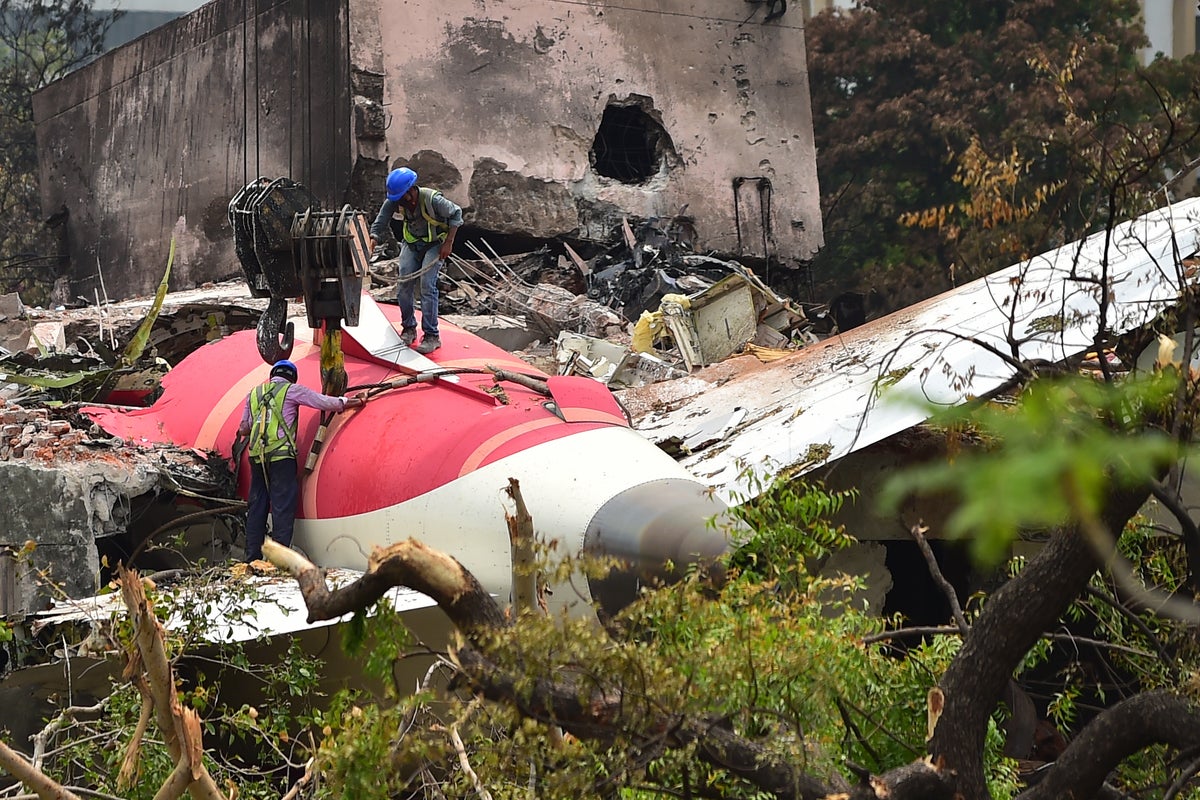
More airlines asked to check fuel switches on Boeing jets after Ahmedabad crash
The unanswered questions from the Air India crash report
07:57 , Maroosha MuzaffarOver the weekend, the Indian Aircraft Accident Investigation Bureau released a preliminary report on last month’s crash of Air India flight 171, which killed 260 people, 19 of them on the ground.
The aim of a preliminary report is to present factual information gathered so far and to inform further lines of inquiry.
However, the 15-page document has also led to unfounded speculation and theories that are currently not supported by the evidence.
Here’s what the report actually says, why we don’t yet know what caused the crash, and why it’s important not to speculate:

What are fuel switches and why do they matter in the Air India crash?
07:30 , Maroosha MuzaffarThe fuel control switches, prominently located on the critical cockpit control panel, regulate the flow of fuel into each of the plane’s two engines.
Pilots flying the aircraft use fuel cutoff switches to start or shut down engines on the ground. In the event of an engine failure during a flight, the pilots can manually shut down or restart engines using these switches.
They are centrally located on the pedestal between the two pilot seats, positioned just behind the throttle levers.
These switches cannot be accidentally or gently moved by pilots operating a flight. The fuel cutoff switches are spring-loaded to remain firmly in place. They operate in two modes — “CUTOFF” and “RUN”. “Cutoff” stops the fuel supply to the engine, while “Run” allows fuel to flow.
Read more here:

What are fuel switches and why do they matter in the Air India crash?
South Korea to order fuel switch checks on Boeing jets after Air India crash
07:00 , Maroosha MuzaffarSouth Korea is set to instruct all airlines operating Boeing aircraft to inspect fuel switches, which are under scrutiny following the Air India crash investigation.
The move follows a preliminary report on last month’s crash of an Air India Boeing 787-8, which referenced a 2018 US Federal Aviation Administration (FAA) advisory on potential issues with fuel switch locks.

A spokesperson for South Korea’s transport ministry said the checks align with the FAA’s 2018 guidance, though no timeline for inspections was provided.
India's aviation regulator has also directed all airlines to inspect fuel switches on Boeing aircraft, following the preliminary report that revealed fuel supply was cut just seconds after Air India flight 171 took off on 12 June.
Families of Air India crash victims slam report as ‘cover-up’
06:30 , Maroosha MuzaffarRelatives of the crash victims criticised the preliminary report as a "cover up" as they hoped for more answers from the investigators.
A cousin of sisters Dhir and Heer Baxi, who were flying home to London when they died in the crash, said they were not satisfied with the report, The Guardian reported.
Ishan Baxi said they were "still hoping for a more transparent and honest investigation that doesn’t shy away from addressing possible mechanical flaws or lapses in protocol to avoid future potential accidents”.
“I just hope the final report brings full clarity on what exactly failed and who’s accountable. It shouldn’t hide behind vague terms. More than anything, it should push for real changes so this never happens again," the Ahmedabad resident said.
Tushar Joge, whose two relatives were on the ill-fated aircraft, alleged that the preliminary report was a "cover up" to save Air India and Boeing. "We were pre-empting that they would start blaming the pilots," Mr Joge was quoted as saying by The Times of India.
In the wake of the preliminary findings, Boeing privately issued a notification stating that the fuel switch locks on Boeing planes were safe, Reuters reported.
Air India CEO says pilots ‘passed’ tests as criticism mounts over probe report
05:54 , Maroosha MuzaffarThe preliminary investigation report on last month's Air India crash found no mechanical or maintenance issue with the aircraft, the company's chief executive said.
In an internal memo, Campbell Wilson said the probe into the Boeing Dreamliner crash in Ahmedabad, which killed 260 people, was "far from over". He added the pilots had “passed” all pre-flight checks amid allegations that the disaster was caused by human error.
The report found "no mechanical or maintenance issues with the aircraft or engines and that all mandatory maintenance tasks had been completed," Mr Wilson said.
"There was no issue with the quality of fuel and no abnormality with the take-off roll.”
The report released by India's Aircraft Accident Investigation Bureau a month after the 12 June crash found that three seconds after taking off, the plane’s fuel switches almost simultaneously flipped from run to cutoff, starving the engines.
Read more here:

Air India CEO says pilots ‘passed’ tests as criticism mounts over probe report
Simon Calder explains how flight was ‘doomed’ without sufficient power
05:36 , Maroosha MuzaffarThe Independent’s Simon Calder takes a closer look at the preliminary report into last month’s Air India crash.
The report by Indian aviation accident investigators has found fuel supply to the engines of the Air India plane was cut off just seconds after the flight took off.

Simon Calder explains report findings of ‘doomed’ Air India flight
Key questions after Air India flight 171 crash report
05:00 , Maroosha Muzaffar- How did both engine fuel control switches – designed with locking mechanisms to prevent accidental movement – get flipped to the ‘cutoff’ position within seconds of takeoff?
- Could a mechanical malfunction override the spring-loaded safety design, or was it human error?
- Why were the switches later found back in the ‘run’ position at the crash site – were the pilots trying to recover engine power too late?
- What exactly happened in the cockpit during those final 32 seconds, and why did one pilot ask the other, “Why did you cut it off?”
- Is there evidence of confusion, miscommunication, or a systems failure?
- Can such a catastrophic loss of thrust occur again, despite multiple safety barriers meant to prevent it?
India's aviation regulator orders airlines to inspect fuel switch locks on Boeing
04:52 , Maroosha MuzaffarIndia’s aviation regulator has ordered airlines to inspect fuel switch locks on Boeing aircraft after a report on the Air India Flight 171 crash showed both engines lost fuel seconds after takeoff.
The Directorate General of Civil Aviation issued the order after several Indian and foreign airlines began inspecting the fuel switch locking mechanisms on their own.

The prelim report into the Air India flight 171 has triggered debate over pilot error versus mechanical failure.
While Air India urged caution, pilot unions condemned speculation, especially around suicide. A 2018 FAA advisory had flagged fuel switch lock issues on some Boeing models.
What the preliminary report reveals about the Air India crash
04:30 , Maroosha MuzaffarThe cockpit voice recorder from Air India Flight 171 has shed light on the tense final moments before the crash, with one pilot reportedly asking the other, “Why did you cut it off?” – a reference to the fuel control switches that were somehow flipped to the “cut-off” position just after takeoff, causing both engines to lose power.
The preliminary report stops short of assigning blame, but the exchange has reopened the debate around pilot error and mechanical fault.
Even the insinuation that a pilot’s error could be behind the crash has angered the community. An Indian pilots’ association rejected the presumption of pilot error in the Ahmedabad crash.
The Airline Pilots' Association of India (ALPA-India), which represents Indian pilots at the Montreal-based International Federation of Air Line Pilots’ Associations, called for "fair, fact-based inquiry."
"The pilots body must now be made part of the probe, at least as observers," ALPA India president Sam Thomas said on Sunday.
Who were the pilots of doomed Air India flight as preliminary report brings scrutiny?
04:00 , Maroosha MuzaffarCaptain Sumeet Sabharwal:
Sabharwal, 56, started his aviation career in the early 1990s and logged more than 15,000 hours of flying experience. Joining Air India in 1994, he went on to become “line training captain”, a role to train and guide co-pilots during live flights. He had obtained clearances to fly as pilot-in-command on several aircraft, including the Boeing 787 and 777 and the Airbus A310.
First officer Clive Kunder:
Unlike Captain Sabharwal, first officer Cliver Kunder, 32, was at the beginning of a promising aviation career, with over 3,400 hours of flight time to his name.
Kunder grew up in Mumbai and was living alone in the Goregaon area. According to Indian media reports citing relatives, he had dreamt of flying since childhood. He began his journey as a pilot in 2012 and joined Air India in 2017.
Read more about them here:
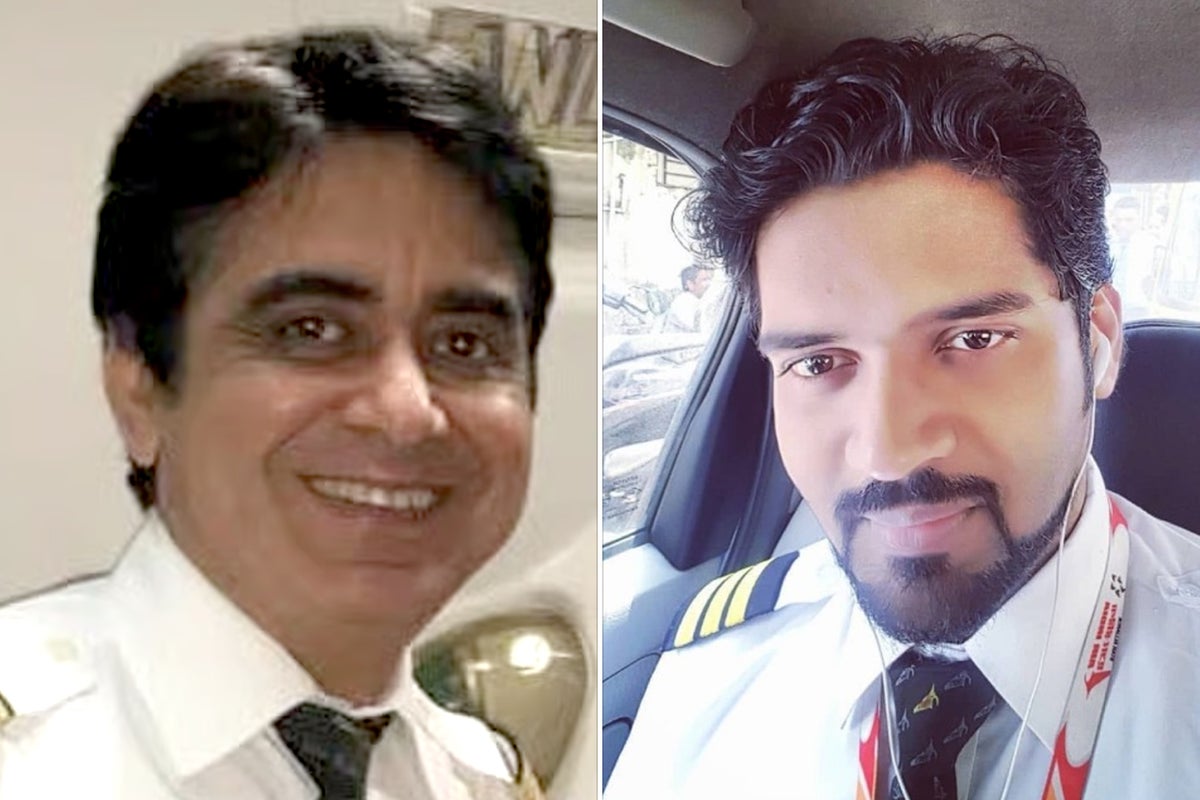
What did the Air India CEO say in internal memo?
03:00 , Alexander ButlerThe probe into last month's crash of an Air India plane in Ahmedabad is far from over and it is unwise to jump to any premature conclusions, airline CEO Campbell Wilson said in an internal memo on Monday after the release of a preliminary report by investigators.
The memo, reviewed by Reuters, comes after the report depicted confusion in the cockpit shortly before the crash of the Boeing Dreamliner that killed 260 people. It said the plane's engine fuel cutoff switches flipped almost simultaneously and starved the engines of fuel.
"The release of the preliminary report marked the point at which we, along with the world, began receiving additional details about what took place. Unsurprisingly, it provided both greater clarity and opened additional questions." the memo said.
Mr Wilson added: "The preliminary report identified no cause nor made any recommendations, so I urge everyone to avoid drawing premature conclusions as the investigation is far from over."
The Boeing 787 Dreamliner bound for London from the Indian city of Ahmedabad began to lose thrust and sink shortly after takeoff, according to the report released by India's Aircraft Accident Investigation Bureau (AAIB).
The memo said the preliminary report found no mechanical or maintenance faults and that all required maintenance had been carried out.
The preliminary report, released on Saturday, suggested no immediate action for Boeing or GE, whose engines were fitted on to the aircraft.
Recap: Families of victims left questioning how the tragedy took place
02:00 , Alexander ButlerThe findings have left some families of victims questioning how the tragedy took place, and if it was avoidable.
Badasab Syed, 59, who lost his brother, 49-year-old IT professional Inayat Syed, his sister-in-law, and their two children in the crash, said he has just been left with more questions.
He told the BBC: “The report mentions the pilots discussing who turned off fuel and a possible issue with the fuel control switch. We don’t know what that means? Was it avoidable?”
Ayushi Christian, who married Lawrence Christian in 2023 before migrating to the UK, said her husband was in India because he had been performing the last rites of his father. He was on the AI 171 flight to return home to the UK.
Following the release of an initial report into the incident, Ms Christian told the BBC: “It has been one month since the crash, but no action has been taken by the government so far. [The] preliminary investigation report has come out today. Action should be taken against those responsible for the incident.”
Not easy to ‘accidentally’ cut off fuel switches, expert says on Air India crash
01:00 , Alexander ButlerThe fuel switches that were cut off before the Air India plane crash are the kind used on every flight, and designed so that this cannot easily "accidentally" happen, an aviation expert has said.
The fuel switches are used at the end of every flight and in emergency scenarios such as a fire, director of aerospace and aviation at Cranfield University, Professor Graham Braithwaite said, adding that pilots would generally run through a checklist before turning them off.
He said: "For obvious reasons, the two switches are a distance apart, so not a huge distance, but enough that you couldn't accidentally switch two when you're trying to switch one.
"So it's not like the lights in your house, where they're right next to each other, so there is some space between them.
"They're in that centre console, so that's in between the two pilots, so they can each reach them with the same ease."
Recap: South Korea set to order airlines to check Boeing jet fuel switches
Monday 14 July 2025 23:00 , Alexander ButlerSouth Korea is preparing to order all airlines in the country that operate Boeing jets to examine fuel switches in the focus of an investigation of a deadly Air India crash that killed 260 people.
Fuel switch locks have come under scrutiny after a mention of a 2018 advisory from the US Federal Aviation Administration (FAA) in a preliminary report into last month's crash of Air India's Boeing 787-8 jet.
A spokesperson for the South Korean transport ministry said the checks were in line with a 2018 advisory from the FAA, but did not give a timeline for inspections.
Boeing referred Reuters' questions to the FAA, which was not immediately available to comment outside regular hours.
Who were the pilots of doomed Air India flight as preliminary report brings scrutiny?
Monday 14 July 2025 22:00 , Alexander Butler
Simon Calder answers your air travel safety questions – from Boeing worries to the truth about budget airlines
Monday 14 July 2025 21:00 , Alexander Butler.png?trim=0,0,0,0&width=1200&height=800&crop=1200:800)
Simon Calder on air travel safety – from Boeing to budget airlines
The unanswered questions from the Air India crash report
Monday 14 July 2025 20:00 , Alexander Butler
What is a ‘black box’ and what can it tell us about the Air India plane crash
Monday 14 July 2025 19:00 , Alexander Butler
What is a ‘black box’ and what can it tell us about the Air India plane crash
What’s the safest seat on a plane? What experts say after miracle of seat 11A on Air India crash
Monday 14 July 2025 18:00 , Alexander Butler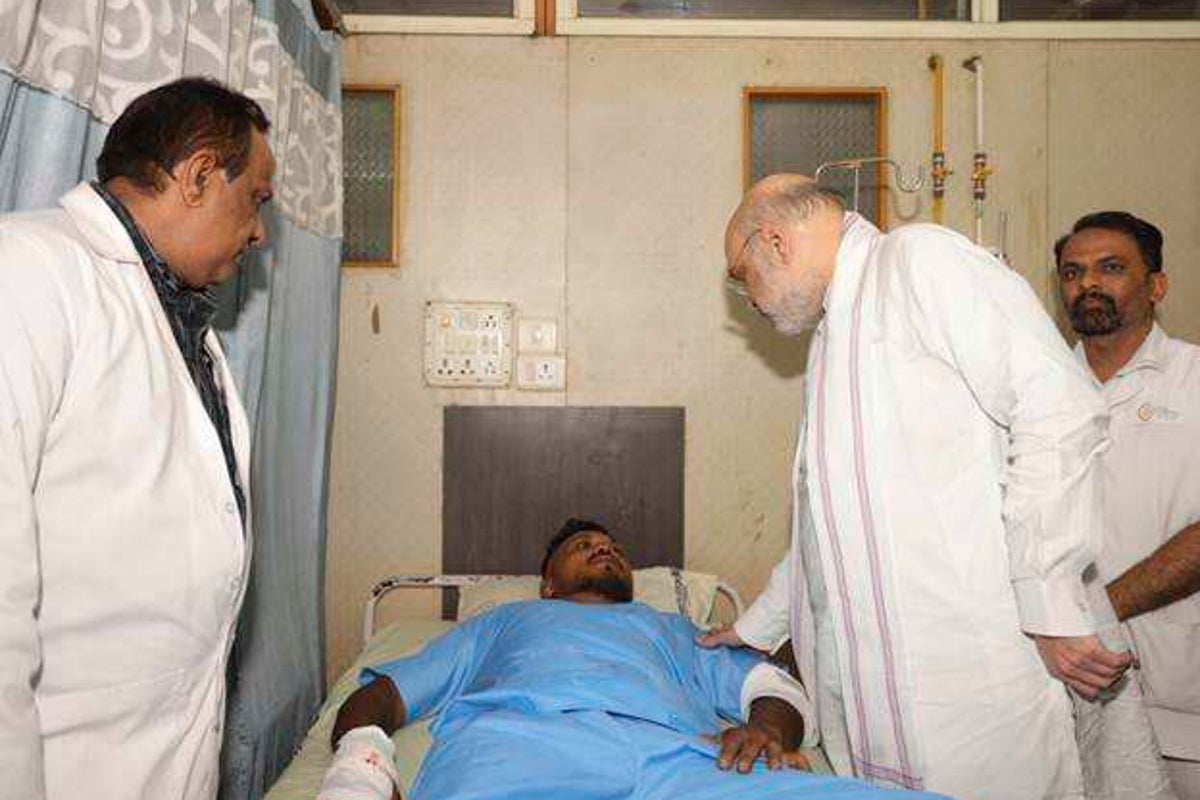
What experts say after miracle of seat 11A on Air India crash
Is flying safe? The facts and figures after Air India tragedy
Monday 14 July 2025 17:00 , Alexander Butler
Is flying safe? The facts and figures after Air India tragedy
Watch: Air India flight ‘was doomed’ without sufficient power, explains Simon Calder
Monday 14 July 2025 16:00 , Alexander ButlerAir India says crash investigation 'far from over' as scrutiny mounts
Monday 14 July 2025 15:45 , Alexander ButlerAir India CEO Campbell Wilson offered reassurances, saying preliminary investigation found no mechanical or maintenance faults with the aircraft.
“The Air India crash investigation is far from over,” Mr Wilson said, adding that the airline continues to cooperate fully with authorities, according to an internal memo seen by Reuters.
However, he cautioned against "premature conclusions".
He said both pilots passed the mandatory pre-flight breathalyser tests, and there were no observations about their medical status.
There was no issue with the quality of fuel or any abnormality in the aircraft’s take-off roll, he noted.
The preliminary investigation found no mechanical or maintenance faults with the aircraft or its GE engines.
He added that all Boeing 787s in Air India’s fleet were inspected within days of the crash, and were found fit for service.
The airline is continuing to perform all required checks and stands ready to carry out any new inspections recommended by authorities, he added.
Recap: Air India CEO says pilots passed pre-flight breathalyser tests
Monday 14 July 2025 15:30 , Alexander ButlerAir India CEO Campbell Wilson has stated that both pilots aboard the ill-fated Boeing 787-8 flight that crashed last month passed all mandatory pre-flight medical checks, including breathalyser tests.
His remarks, made in an internal memo to staff, come as questions continue to swirl around the cause of the crash, which killed 260 people shortly after takeoff.
Both pilots passed the mandatory pre-flight breathalyser tests, and there were no observations pertaining to their medical status, he said.
The clarification comes amid growing scrutiny over the preliminary investigation, which revealed that both fuel cutoff switches were flipped shortly after takeoff, shutting down the aircraft’s engines.
The report stopped short of attributing blame, but cockpit voice recordings captured one pilot asking the other why the fuel had been cut -with the second replying that he had not done it.
India orders airlines to check fuel switches on Boeing jets
Monday 14 July 2025 15:06 , Alexander ButlerIndia on Monday ordered its airlines to examine fuel switches on several Boeing models, while South Korea said it would order a similar measure, as scrutiny intensified of fuel switch locks at the centre of an investigation into a deadly Air India crash.
The moves by India and South Korea came despite the planemaker and US Federal Aviation Administration telling airlines and regulators in recent days that the fuel switch locks on Boeing jets are safe.
The locks have come under scrutiny following last month's crash of an Air India jet, which killed 260 people. A preliminary report found that the switches had almost simultaneously flipped from run position to cutoff shortly after takeoff.
The report noted a 2018 advisory from the U.S. Federal Aviation Administration (FAA), which recommended, but did not mandate, operators of several Boeing models including the 787 to inspect the locking feature of fuel cutoff switches to ensure they could not be moved accidentally.
India's Directorate General of Civil Aviation said it had issued an order to investigate locks on several Boeing models including 787s and 737s, after several Indian and international airlines began making their own inspections of fuel switches.
The regulator oversees the world's third-largest and fastest-growing aviation market and its move raises the stakes for Boeing, whose aircraft are used by three of the country's four largest airlines.
Air India CEO says pilots ‘passed’ tests as criticism mounts over probe report
Monday 14 July 2025 14:56 , Alexander Butler
Air India CEO says pilots ‘passed’ tests as criticism mounts over probe report
Air India CEO says investigation into Ahmedabad crash raises new questions
Monday 14 July 2025 14:40 , Alexander ButlerA preliminary investigation into the crash of an Air India passenger jet last month that killed 260 people raises additional questions about the incident and the investigation is far from over, Air India's CEO said in a memo on Monday.
The preliminary investigation released by India's Aircraft Accident Investigation Bureau (AAIB) on Saturday depicted confusion in the cockpit shortly before the crash of the Boeing Dreamliner.
In a staff memo reviewed by Reuters, Air India CEO Campbell Wilson said the report had "triggered a new round of speculation in the media ... Unsurprisingly, it provided both greater clarity and opened additional questions."
He added: "The preliminary report identified no cause nor made any recommendations, so I urge everyone to avoid drawing premature conclusions as the investigation is far from over."
What are fuel switches and why do they matter?
Monday 14 July 2025 14:24 , Arpan RaiThe fuel control switches, prominently located on the critical cockpit control panel, regulate the flow of fuel into each of the plane’s two engines.
Pilots flying the aircraft use fuel cutoff switches to start or shut down engines on the ground. In the event of an engine failure during a flight, the pilots can manually shut down or restart engines using these switches.
They are centrally located on the pedestal between the two pilot seats, positioned just behind the throttle levers.
These switches cannot be accidentally or gently moved by pilots operating a flight. The fuel cutoff switches are spring-loaded to remain firmly in place. They operate in two modes — “CUTOFF” and “RUN”. “Cutoff” stops the fuel supply to the engine, while “Run” allows fuel to flow.

What are fuel switches and why do they matter in the Air India crash?
Who were the pilots of doomed Air India flight as preliminary report brings scrutiny?
Monday 14 July 2025 13:52 , Alexander Butler
Simon Calder answers your air travel safety questions – from Boeing worries to the truth about budget airlines
Monday 14 July 2025 13:42 , Alexander Butler.png?trim=0,0,0,0&width=1200&height=800&crop=1200:800)
Simon Calder on air travel safety – from Boeing to budget airlines
Families of victims left questioning how the tragedy took place
Monday 14 July 2025 13:32 , Shweta SharmaThe findings have left some families of victims questioning how the tragedy took place, and if it was avoidable.
Badasab Syed, 59, who lost his brother, 49-year-old IT professional Inayat Syed, his sister-in-law, and their two children in the crash, said he has just been left with more questions.
He told the BBC: “The report mentions the pilots discussing who turned off fuel and a possible issue with the fuel control switch. We don’t know what that means? Was it avoidable?”
Ayushi Christian, who married Lawrence Christian in 2023 before migrating to the UK, said her husband was in India because he had been performing the last rites of his father. He was on the AI 171 flight to return home to the UK.
Following the release of an initial report into the incident, Ms Christian told the BBC: “It has been one month since the crash, but no action has been taken by the government so far. [The] preliminary investigation report has come out today. Action should be taken against those responsible for the incident.”
Air India CEO says pilots ‘passed’ tests as criticism mounts over probe report
Monday 14 July 2025 13:00The preliminary investigation report on last month's Air India crash found no mechanical or maintenance issue with the aircraft, the company's chief executive said.
In an internal memo, Campbell Wilson said the probe into the Boeing Dreamliner crash in Ahmedabad, which killed 260 people, was "far from over". He added the pilots had “passed” all pre-flight checks amid allegations that the disaster was caused by human error.
The report found "no mechanical or maintenance issues with the aircraft or engines and that all mandatory maintenance tasks had been completed," Mr Wilson said.
Read our full report.

Air India CEO says pilots ‘passed’ tests as criticism mounts over probe report
Who were the two pilots who flew the Air India jet that crashed?
Monday 14 July 2025 12:30 , Shweta SharmaInvestigators probing a deadly Air India crash said in a preliminary report that the aircraft's engine fuel switches were flipped to an off position briefly, leading to confusion in the cockpit and putting focus on the pilots flying the Boeing 787.
The two pilots of the doomed flight were Captain Sumeet Sabharwal and first officer Clive Kunder.
Captain Sumeet Sabharwal
The 56-year-old had an airline transport pilot's licence that was valid until May 14, 2026.
He had obtained clearances to fly as pilot-in-command on several aircraft including the Boeing 787 and 777 and the Airbus A310.
He had total flying experience of 15,638 hours, of which 8,596 hours were on a Boeing 787.

Sabharwal had called his family from the airport, assuring them he would ring again after landing in London, according to a Times of India report. A pilot who had briefly interacted with him told Reuters he was a "gentleman."
First officer Clive Kunder
The 32-year-old had a commercial pilot license which was issued in 2020 and valid until 26 September 2025.
He had obtained clearances to fly Cessna 172 and Piper PA-34 Seneca aircraft as pilot-in-command and as co-pilot on Airbus A320 and Boeing 787 jets.
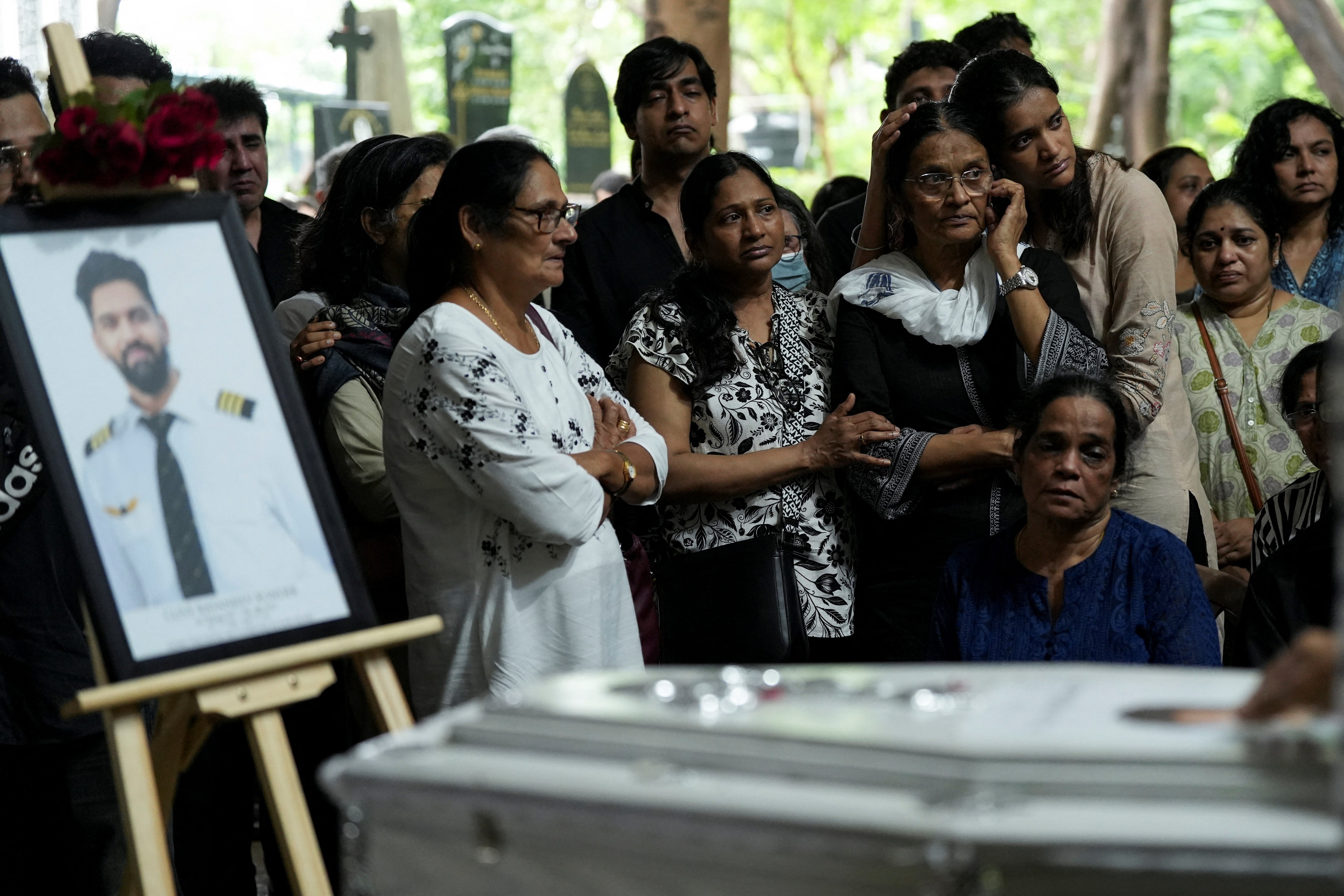
He had total flying experience of 3,403 hours. Of that, 1,128 hours of experience were as a 787 co-pilot.
Since his school-going days Kunder was passionate about flying, and in 2012, began serving as a pilot, Indian media reported, citing his relatives. He joined Air India in 2017.
South Korea set to order airlines to check Boeing jet fuel switches
Monday 14 July 2025 12:00 , Shweta SharmaSouth Korea is preparing to order all airlines in the country that operate Boeing jets to examine fuel switches in the focus of an investigation of a deadly Air India crash that killed 260 people.
Fuel switch locks have come under scrutiny after a mention of a 2018 advisory from the US Federal Aviation Administration (FAA) in a preliminary report into last month's crash of Air India's Boeing 787-8 jet.
A spokesperson for the South Korean transport ministry said the checks were in line with a 2018 advisory from the FAA, but did not give a timeline for inspections.
Boeing referred Reuters' questions to the FAA, which was not immediately available to comment outside regular hours.

In the Air India crash, the switches had almost simultaneously flipped from run position to cutoff just after takeoff, but the preliminary report did not say how they could have flipped to that position during flight.
The 2018 FAA advisory recommended, but did not mandate, operators of several Boeing models, including the 787, to inspect the locking feature of the fuel cutoff switches to ensure they could not be moved accidentally.
On Sunday, it was reported that the planemaker and the FAA had privately issued notifications to airlines and regulators that the fuel switch locks on Boeing planes were safe and checks were not required.
Not easy to ‘accidentally’ cut off fuel switches, expert says on Air India crash
Monday 14 July 2025 11:30 , Shweta SharmaThe fuel switches that were cut off before the Air India plane crash are the kind used on every flight, and designed so that this cannot easily "accidentally" happen, an aviation expert has said.
The fuel switches are used at the end of every flight and in emergency scenarios such as a fire, director of aerospace and aviation at Cranfield University, Professor Graham Braithwaite said, adding that pilots would generally run through a checklist before turning them off.

He said: "For obvious reasons, the two switches are a distance apart, so not a huge distance, but enough that you couldn't accidentally switch two when you're trying to switch one.
"So it's not like the lights in your house, where they're right next to each other, so there is some space between them.
"They're in that centre console, so that's in between the two pilots, so they can each reach them with the same ease."
Why the Air India crash report leaves devastated families with more questions
Monday 14 July 2025 10:45 , Shweta SharmaEarly findings of an investigation into the Air India crash last month have revealed the plane’s fuel switches were cut off after take-off, leaving victim’s families with more questions and seeking “justice and answers”.
The preliminary report from India’s Aircraft Accident Investigation Bureau (AAIB), published on Friday, said both of the plane’s fuel switches were moved to the “cut-off” position “immediately” after take-off, stopping fuel supply to the engine.
It included a harrowing transcript of a cockpit conversation between the pilots, one asks the other why he cut-off, before the other responded to say he did not.
Experts have since said it is not easy to “accidentally” cut off fuel switches.

Why the Air India crash report leaves devastated families with more questions
What did the Air India CEO say in internal memo?
Monday 14 July 2025 10:00 , Shweta SharmaThe probe into last month's crash of an Air India plane in Ahmedabad is far from over and it is unwise to jump to any premature conclusions, airline CEO Campbell Wilson said in an internal memo on Monday after the release of a preliminary report by investigators.
The memo, reviewed by Reuters, comes after the report depicted confusion in the cockpit shortly before the crash of the Boeing Dreamliner that killed 260 people. It said the plane's engine fuel cutoff switches flipped almost simultaneously and starved the engines of fuel.
"The release of the preliminary report marked the point at which we, along with the world, began receiving additional details about what took place. Unsurprisingly, it provided both greater clarity and opened additional questions." the memo said.
Mr Wilson added: "The preliminary report identified no cause nor made any recommendations, so I urge everyone to avoid drawing premature conclusions as the investigation is far from over."
The Boeing 787 Dreamliner bound for London from the Indian city of Ahmedabad began to lose thrust and sink shortly after takeoff, according to the report released by India's Aircraft Accident Investigation Bureau (AAIB).
The memo said the preliminary report found no mechanical or maintenance faults and that all required maintenance had been carried out.
The preliminary report, released on Saturday, suggested no immediate action for Boeing or GE, whose engines were fitted on to the aircraft.

